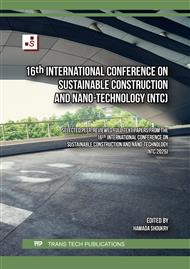p.1
p.23
p.43
p.55
p.65
Decreasing Silica Scaling on Reverse Osmosis Membranes by Different Methods in Different Circumstances
Abstract:
Reverse osmosis (RO), the main technique for desalination, is affected by the quality of the water source. Natural water contains silica, which comes from metal silicates found in the earth's crust. Silica fouling is complicated to manage and often leads to less efficient designs of RO systems for safe operation. This research evaluates the current technologies for treating silica in RO desalination. The pilot project showed considerable water savings, achieving maximum recovery over the longest duration. To enhance water conservation, it is essential to optimize permeate recovery. Water savings were constrained due to silica scaling on the membranes. The chosen membranes can achieve a lower total dissolved solids (TDS) rejection than was required in the initial research, which could enhance water conservation. The additional energy needed for membrane treatment was balanced out by the savings in water costs. To avoid scaling, an antiscalant chemical along with a dosing system was installed next to the membrane system, and this study focused on three methods to mitigate silica scaling: Amonium Bifloride (ABF), a cation ion exchange column (IEX) containing Amberlite-IRC747 (Dupont) resins to eliminate multivalent cations like Ca2+, Mg2+, and Fe3+. Lastly, a simulated anti-scaling test was conducted using a feed solution that was pretreated by MIL-101(Fe) adsorption. Each type of antiscalant suitable for decreasing silica from water possesses distinct characteristics such as pH and other cations. Keywords:, Water conservation, Silica , Anti-Scalant, Amonium Bifloride (ABF), Exchange column (IEX) filled with Amberlite-IRC747 (Dupont), MIL-101(Fe).
Info:
Periodical:
Pages:
55-64
Citation:
Online since:
August 2025
Authors:
Keywords:
Price:
Сopyright:
© 2025 Trans Tech Publications Ltd. All Rights Reserved
Share:
Citation:


